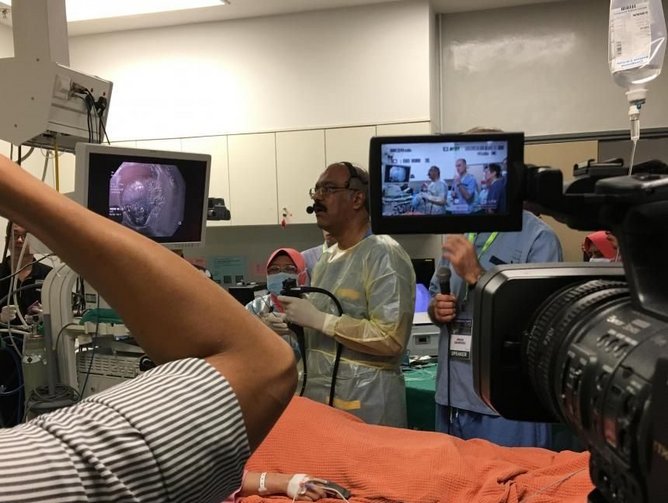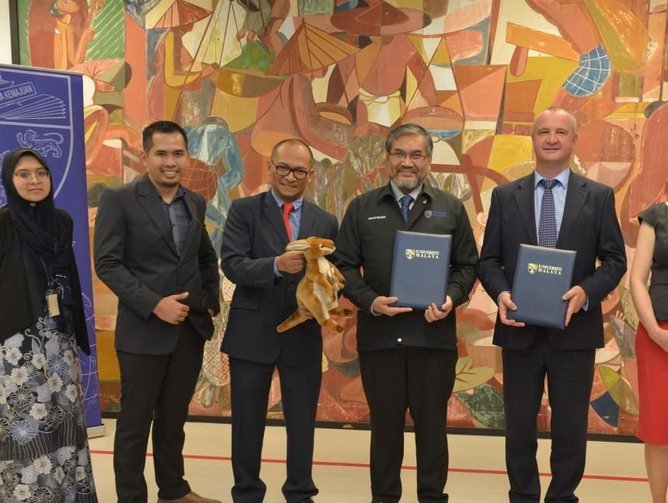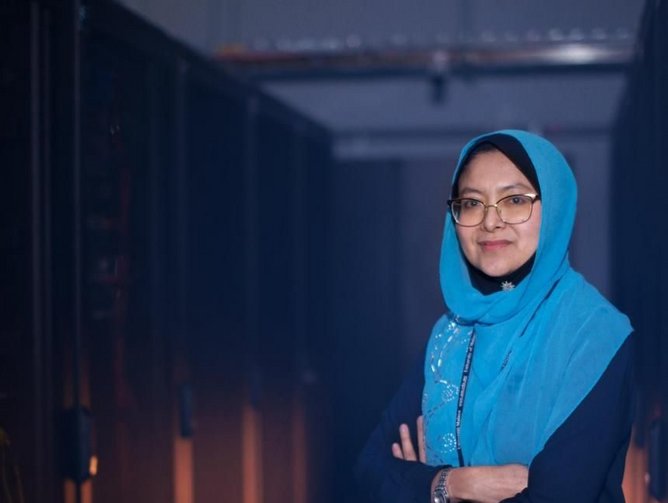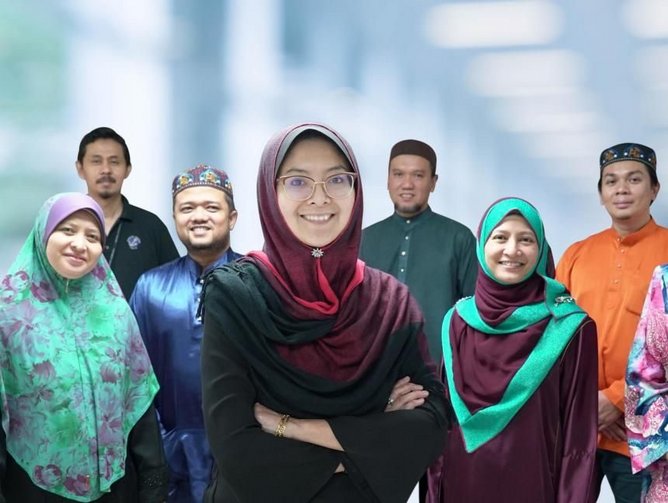How University of Malaya is creating a smart campus with its trailblazing digital transformation
There was a time when the education sector was a straight-forward profession: traditionally in a classroom there might be a blackboard, a teacher, and rows of students sat at desks. Now, as cutting-edge technologies have entered the fray, there’s been a growing need to change the way students both live and learn and nowhere can this be seen better than in Asia. Take, for example, the University of Malaya: it may be Malaysia’s oldest university, but with its innovative ICT centre, Pusat Teknologi Maklumat (PTM), the institution has quickly earned its stripes as a thriving innovation hub.
With almost 25 years’ experience working at the university, Asiah Abu Samah, Director of the IT Centre, has witnessed first-hand the way that PTM’s technology has transformed the institution’s campus operations, teaching and learning. “PTM is a partner to the university in terms of applying IT technology,” Abu Samah explains. “The centre provides network services, ICT security monitoring, application development, data centre, IT support, and we also help the university in terms of IT governance, for example. Our aim is to provide an evolving IT platform that supports the university’s overall continuous development, sustainability, optimisation and mitigation of enterprise risks.
“IT is a major priority for the organisation,” she adds. “The university has quickly realised that it needs to become leaner as an organisation and IT is the best tool to achieve this. It makes us more competitive. It helps improve the user experience for students and stakeholders. It helps us gear up towards Industry 4.0. As a result, we are focusing on data-related decision making and analytics.”
One such project that Abu Samah highlights is the university’s efforts to become a ‘smart campus’. A trailblazer in IT, the university campus is quickly transitioning towards cashless payments and the use of QR codes. In doing so the University of Malaya hopes to encourage digitally-savvy students to feel more engaged in university life and to compete successfully in today’s digital economy. On top of this, it will also make transactions more seamless and boost revenues.
“The object of this smart campus is to support process optimisation, financial sustainability and wealth creation,” Abu Samah says. “The cashless campus will help us check our revenue and income, and it will also help to improve the user experience because it's faster, easier and more seamless. In the long-term, I think smart campuses will soon become the norm.”
With over 24,000 students passing through the university’s doors daily, PTM’s operations are far reaching. The ICT centre is comprised of: a data centre management division, an information management system division, an innovation and commercialisation division, a network division, an ICT operations and support division, and a governance, security and administration division. Each division has a vital role that keeps the cogs going at this prestigious institution.
Regardless of the department, however, Abu Samah points out that two of the most crucial trends her team need to be in tune with are data analytics and security. “In most cases, IT security is actually at the forefront of every organisation,” observes Abu Samah. “Any hiccup can impact negatively on our operation.” The role can be seen most clearly at the university’s data centre and network gateway. With mountains of data at their fingertips, this group ensures that data and information are always easily within reach whilst still remaining secure.
Uptime is a key concern for the university so it is currently in the midst of implementing a new disaster recovery site to ensure that the data centre runs consistently and smoothly, for instance.
“Data analytics is very important to help us position ourselves as a leading university,” she adds. “There are so many universities in the world right now, so we need the data to be analysed and to benchmark ourselves against other universities to see how we compare. This makes us unique in the market.”
This same conscientious approach is also visible in the way the university maintains its network. An internet connection is the lifeblood of any modern university campus, and so PTM’s network division constantly monitors and maintains both the internet and bandwidth of the network to ensure it doesn’t falter. “Our campus network is up 24/7, 365 days a year,” notes Abu Samah. “We can’t even let it down more than one hour. It's very important to us. That's why we set up our ICT security monitoring to ensure that the network is always a safe place to be.” Over 13,000 devices are connected to the university’s wifi service daily and so Abu Samah points out how PTM has chosen Ruckus as a key network partner because the technology they offered “fit PTM’s continuous aim towards improved user experience.” She added: “Ruckus enables stronger and wider coverage, as well as a reduced rate of interference and an ability to cater for more concurrent users.”
From academic records to tuition payments, tuition enrolment to housing information, data is present throughout the whole student lifecycle and, at the University of Malaya, this information can be traced through the Student Management System. Developed over two decades ago, Abu Samah highlights that this platform is slowly becoming outdated and is no longer aligned with the university’s forward-thinking ethos. As such, PTM has embarked on a major project known as PrInTis to transform this system root-and-branch.
“The student information system has been in operation since 1996,” she notes. “The old system was built in a very customised manner and the process is no longer efficient. Therefore, we are working to streamline and simplify the process so it will support our movement towards Industry 4.0.”
Teaming up with technology firm Tribal Group, PTM is setting up a new integrated student management solution that aims to empower students to engage more effectively with the university, anywhere, at any time. It also hopes to provide a more coherent online experience, one that digital native students would expect on the web.
Mobile technology has also been a key priority. “We are aiming to provide an improved user experience, with simplified access to information and a greater focus on mobile applications,” she adds. “Everybody brings their mobiles everywhere, including our staff management, so it is more accessible. We want it to be as simple as using WhatsApp so that our students can access their fees, their grades, and their enrolment costs with a tap of their phone.”
With a keen ear to the ground, PTM is also exploring the use of new, emerging technologies like the Internet of Things (IoT). “We are starting a small project to trial IoT to control the lights and electrical usage, for example,” she says. “We are also looking into the student e-profiling and mobile-based student ID to cater for various purposes.”
The University of Malaya is undoubtedly undergoing a digital revolution. However, Abu Samah is keen to point out that the institution isn’t using technology for technology’s sake. Rather, digitisation has been a key enabler to foster a close-knit community. “Technology is only a tool we need to reach our end goals,” observes Abu Samah. “If our university is to move faster, then we need the technology. We hope to promote more student engagement, inter- and intra-function collaboration. In fact, in some of the projects we involve our alumni too.”
“We’ve grown and developed a lot since I first joined the university in 1993,” she continues. “At that point in time, implementing technology was quite hard because people were quite afraid of technology. Now, people have many ideas about how to use technology. We just have to convince them what is right and how to do it. We are hoping to create a very modern campus, in terms of how it operates. It should be easily accessible for everyone. It should be borderless.”
Behind the scenes at PTM, there is a diligent team of 105 technical staff. Driven by a desire to support the university’s researching, teaching and learning, they are using state-of-the-art technology to help put the University of Malaya on the map.
“I can see that most of the talent is inspired by the desire to develop something bigger than what is expected,” Abu Samah concludes. “They're interested in where the university is going. They want to be part of the team. They want to make the university better.”





